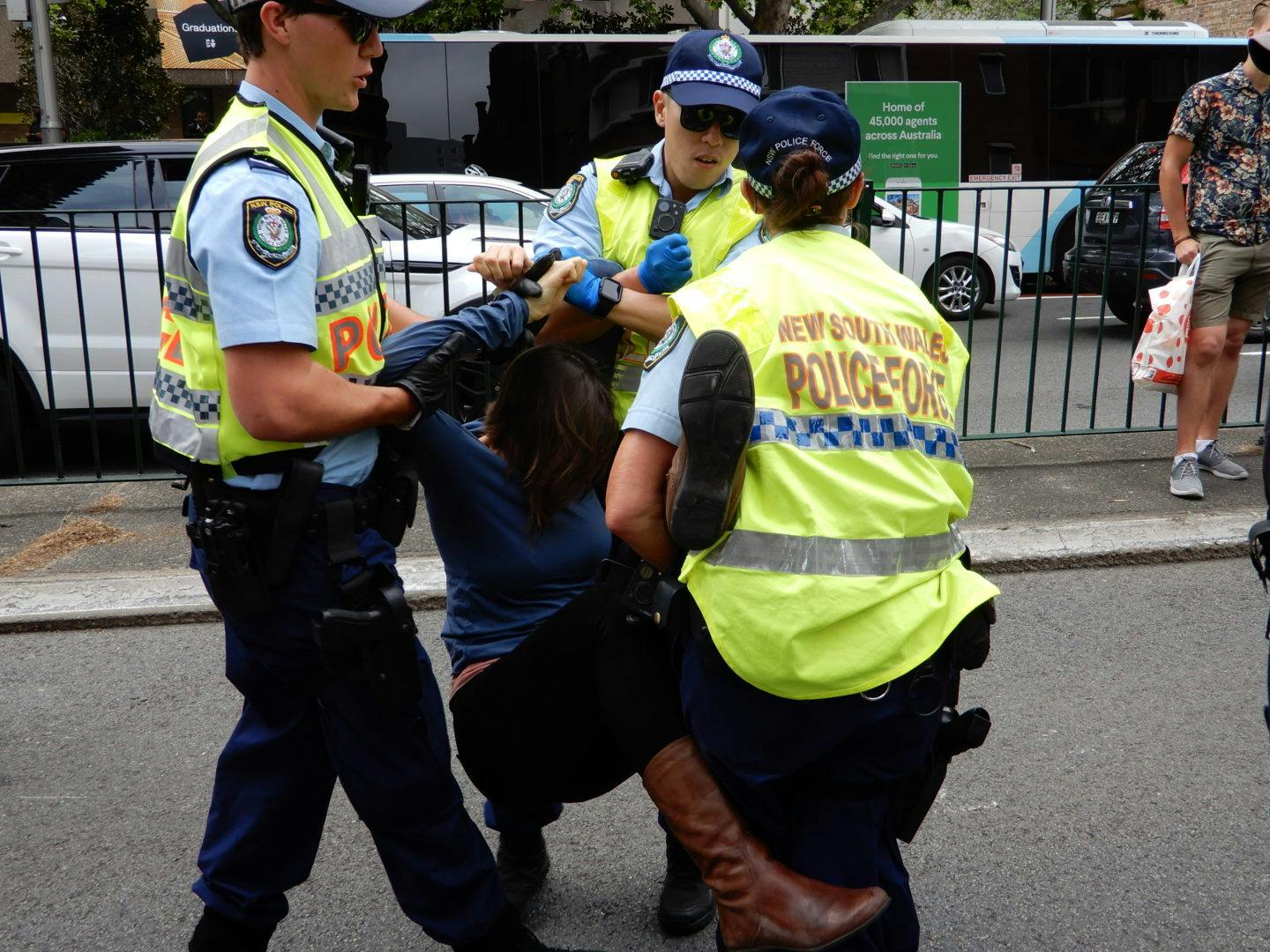Resist NSW anti-protest laws

The NSW Liberal government has passed draconian anti-protest legislation with the vocal backing of Labor. Rushed through 48 hours after being introduced and less than a week after being drafted, the laws state that protesters who “enter, remain on or near, climb, jump from or otherwise trespass on or block entry to any part of a major facility” will be subject to fines of up to $22,000 and a two-year prison sentence.
Major facilities, as defined by the legislation, include railway stations, public transport facilities, private ports and “infrastructure facilities”—anywhere providing “water, sewerage, energy, manufacturing, distribution or other services to the public”. Any bridges, tunnels or roads nominated by the government can also been added to the list, meaning virtually all protests that disrupt anything are in the firing line.
A briefing circulated by the government before the vote lamented the “millions of dollars through direct economic loss and lost productivity” that protests have caused. “What we are stopping, or criminalising even further, are protests that shut down major economic activity”, claimed Attorney-General Mark Speakman in a press conference.
According to the government, these laws apply only to “unlawful” protests. But protesters in New South Wales already face a labyrinth of undemocratic restrictions that make most protests “unlawful”. To hold a “lawful” protest in NSW, written notice of nearly two weeks is required, including proposed march routes and the number of participants. After this form has been submitted, the police have the right to apply to the High Court to have the protest deemed unlawful. Anti-racism, climate action and LGBTI-rights protests have been subject to such rulings in recent years.
Snap protests cannot be “lawful” because there is not time to give the required two-week notice. Likewise, any protest that deviates from the submitted proposal—by spontaneously marching or sitting down on a road, for example—can be considered “unlawful” and therefore subject to criminal penalties.
These measures are an attempt to crush dissent by intimidating activists into thinking twice about calling protests. They give the state virtual carte blanche to stop protests through the courts or criminalise any that intend to cause real disruption: i.e., any protest that works. And they are part of a long erosion of democratic freedoms in New South Wales that demands stubborn resistance.
Activists who are being specifically targeted, from climate action groups Blockade Australia and Extinction Rebellion, have shown commendable courage fighting for the planet. We will need similar courage and defiance on a mass scale to push back against these new laws. As the government has implicitly admitted when putting its case for these laws, disrupting the economic status quo is where our power lies. Individual actions leave activists far more susceptible to police repression, and do not generate the same collective anger and political pressure that targeted, mass actions do.
Recent successes in pushing back against anti-protest measures during the COVID pandemic demonstrate the way forward. In June 2020, 60,000 people defied the state to participate in a Black Lives Matter rally during the global uprising; the New South Wales courts were forced to approve the banned protest retroactively after it had already started. Likewise, the Democracy is Essential civil liberties campaign refused to accept hypocritical restrictions on protests at a time when the rest of society was reopening. Activists pursued a strategy of defiance that eventually restored the right to protest in NSW. We are going to need to mobilise our collective power again to fight back against the latest attack on the right to protest.